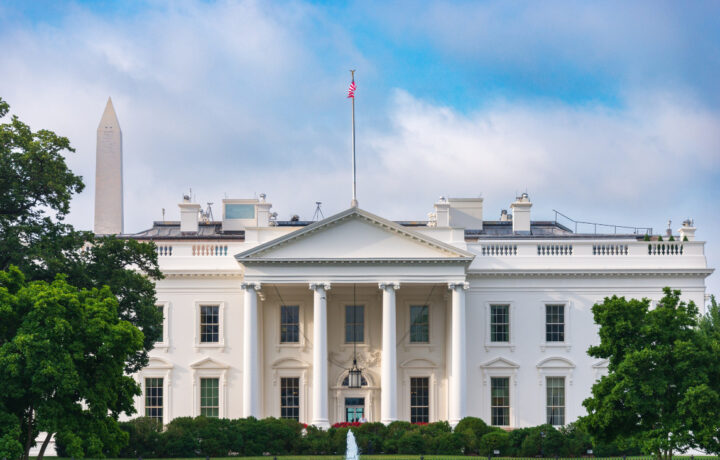Earlier this week, President Donald Trump unveiled a $175 billion, three-year plan to build a massive missile defense system. The White House first touted building an “Iron Dome for America,” modeled after the Israeli Iron Dome air defense system, while the administration has since dubbed it the “Golden Dome.” In January, just days after returning to the Oval Office, Trump signed an executive order that initiated the development and construction of the defense system.
“Once fully constructed the Golden Dome will be capable of intercepting missiles even if they are launched from other sides of the world and even if they are launched from space,” Trump told reporters in the Oval Office on Tuesday.
The president added that he would like to see the project completed by the end of his term and that $25 billion would be earmarked in next year’s budget to start construction. It is unclear if the Golden Dome’s price tag is included in the $1 trillion defense budget for fiscal year 2026 (FY26) that the White House floated earlier this month.
Director of National Intelligence Tulsi Gabbard also highlighted the need for the Golden Dome during her keynote address at the recent GEOINT 2025 Symposium, which was hosted by the U.S. Geospatial Intelligence Foundation (USGIF).
Taking the Lid Off The Golden Dome
The goal of the Golden Dome would be to shield the United States from long-range ballistic and cruise missiles and even hypersonic missile threats. As Politico.com reports, it calls for a multi-layered homeland defense program that could stitch together current Pentagon platforms with new, developmental technologies that include space-based sensors and weapons.
Gen. Chance Saltzman, chief of the United States Space Force, has said it could require building a software backbone to link existing systems with the new ones.
“This design for the Golden Dome will integrate with our existing defense capabilities and should be fully operational before the end of my term,” Trump explained.
He named Gen. Michael Guetlien, the U.S. Space Force’s vice chief of space operations, to head up the project.
It is now being designed in coordination with NORAD, USNORTHCOM, USSPACECOM, and other stakeholders within the U.S. Department of Defense (DoD). The Canadian government has expressed interest in participating in the program, and defense contractors, including Lockheed Martin and SpaceX, have also sought to be involved.
More Ambitious Than Reagan’s “Star Wars”
The Golden Dome could be even more ambitious than “Star Wars,” the proposed missile defense system that was first announced by President Ronald Reagan in 1983, and not the science fiction series—although Star Wars-level technology and budget might still be required.
Such a space-based missile defense has long been a dream, perhaps even a fantasy, of politicians for decades. Reagan called for developing a system to intercept missiles from the then-Soviet Union. The goal of the Strategic Defense Initiative was to render nuclear weapons, at least those carried by ICBMs, obsolete.
“I know this is a formidable task, one that may not be accomplished before the end of this century,” Reagan said at the time. “It will take years, probably decades of effort on many fronts.”
At the time, critics said the technologies were decades away from readiness, while others said they would destabilize the concept of mutually assured destruction (MAD) and potentially re-ignite an offensive arms race.
Similar criticism is already being leveled against the Golden Dome.
The Congressional Budget Office (CBO) has estimated that developing anything resembling a truly comprehensive missile defense system will cost far more than the $175 billion pledged and will require more than $500 billion over the next two decades.
The scale of the project is another issue.
As previously reported, Israel’s Iron Dome protects an area of approximately 8,630 square miles, about the size of New Jersey. By contrast, the United States is 3,800,000 square miles.
“Each Iron Dome system can defend an area of roughly 150 square miles. We would need to deploy more than 24,700 Iron Dome batteries to defend the 3.7 million square miles of the continental United States. At $100 million per battery, that would be approximately $2,470,000,000,000,” nuclear analyst Joe Cirincione wrote last year for Defense One.
Another concern is that space-based sensors and weapons will only further militarize and even weaponize satellites in Earth’s orbit rather than provide an actual dome of security for the nation.




